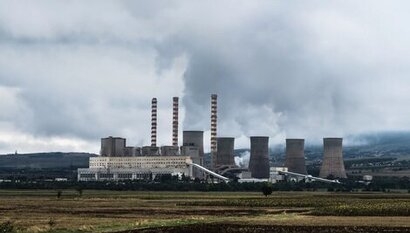
The report 2021 US Geothermal Power Production and District Heating Market Report provides up-to-date information and data reflecting 2019 geothermal power production and district heating markets, technologies, and trends in the United States. This will be of great interest to policymakers, regulators, developers, researchers, engineers, financiers, and other decision-makers.
“Our previous analysis of the geothermal energy sector through DOE’s GeoVision report makes it clear that geothermal power and heat can play an important role in our energy future” said Johney Green, NREL associate laboratory director for Mechanical and Thermal Engineering Sciences. “To reach that potential, we have technical and nontechnical barriers that need to be overcome to reduce risks and costs. This report provides a deeper understanding of the current market environment and trends and highlights challenges and opportunities for increased geothermal deployment.”
Increasing the use of geothermal energy for US heating and cooling can significantly contribute to national decarbonisation goals to cut US emissions in half by 2030 and achieve a carbon-free electric sector by 2035. Geothermal district heating technology is mature and is currently being deployed widely in Europe and Asia.
Select market highlights from the report include:
United States geothermal power capacity increased slightly from 3.627 gigawatts (GW) to 3.673 GW from the end of 2015 through the end of 2019.
During this same timeframe, the United States brought seven new geothermal power plants online, adding 186 megawatts (MW) of nameplate capacity, while 11 plants were retired or classified as nonoperational, subtracting 103 MW of nameplate capacity.
Since late 2019, nine new geothermal Power Purchase Agreements (PPAs) have been signed in four states, which include plans for the first two geothermal power plants to be built in California in a decade.
There are 23 geothermal district heating (GDH) systems, which use geothermal energy to provide heat to buildings through a distribution network, in the United States. The oldest installation dates from 1892 (Boise, Idaho), and the most recent installation was completed in 2017 (Alturas, California).
US GDH systems tend to be smaller in size (average of 4 MWth) than European GDH systems (continent-wide average of about 17 MWth), and orders of magnitude smaller than the average GDH system in China (about 1,000 MWth).
Moving forward, the geothermal power sector is ready for technological innovation. Significant opportunities for expanding power production exist through cutting-edge enhanced geothermal systems (EGS) technology development, new power plant operational paradigms such as hybridisation, harnessing vast coproduction potential from existing oil and gas infrastructure, and critical materials extraction from produced geothermal brines. Innovative approaches to geothermal district heating involve integrating heat pump technology and thermal energy storage, as well as implementation and optimization of energy districts.
In addition, new public and private stakeholders such as universities and companies like Microsoft and Google are embracing geothermal as an on-campus carbon-free heating and cooling solution for achieving decarbonization goals.
State-level geothermal legislation and policy development is active in California, New Mexico, Washington, Hawaii, and Nevada, focusing on geothermal contributions to aggressive decarbonisation goals as well as streamlining administrative and permitting authorities for developing geothermal resources.
This report was developed by NREL researchers and Geothermal Rising, a geothermal energy industry nonprofit organisation, with funding from the DOE’s Geothermal Technologies Office.
The coauthors are NREL’s Amanda Kolker, Francisco Flores-Espino, Koenraad Beckers, Hannah Pauling, and Ben Anderson, along with Geothermal Rising’s Will Pettitt and Brian Schmidt.
NREL is the US Department of Energy's primary national laboratory for renewable energy and energy efficiency research and development. NREL is operated for the Energy Department by the Alliance for Sustainable Energy, LLC.
For additional information:

